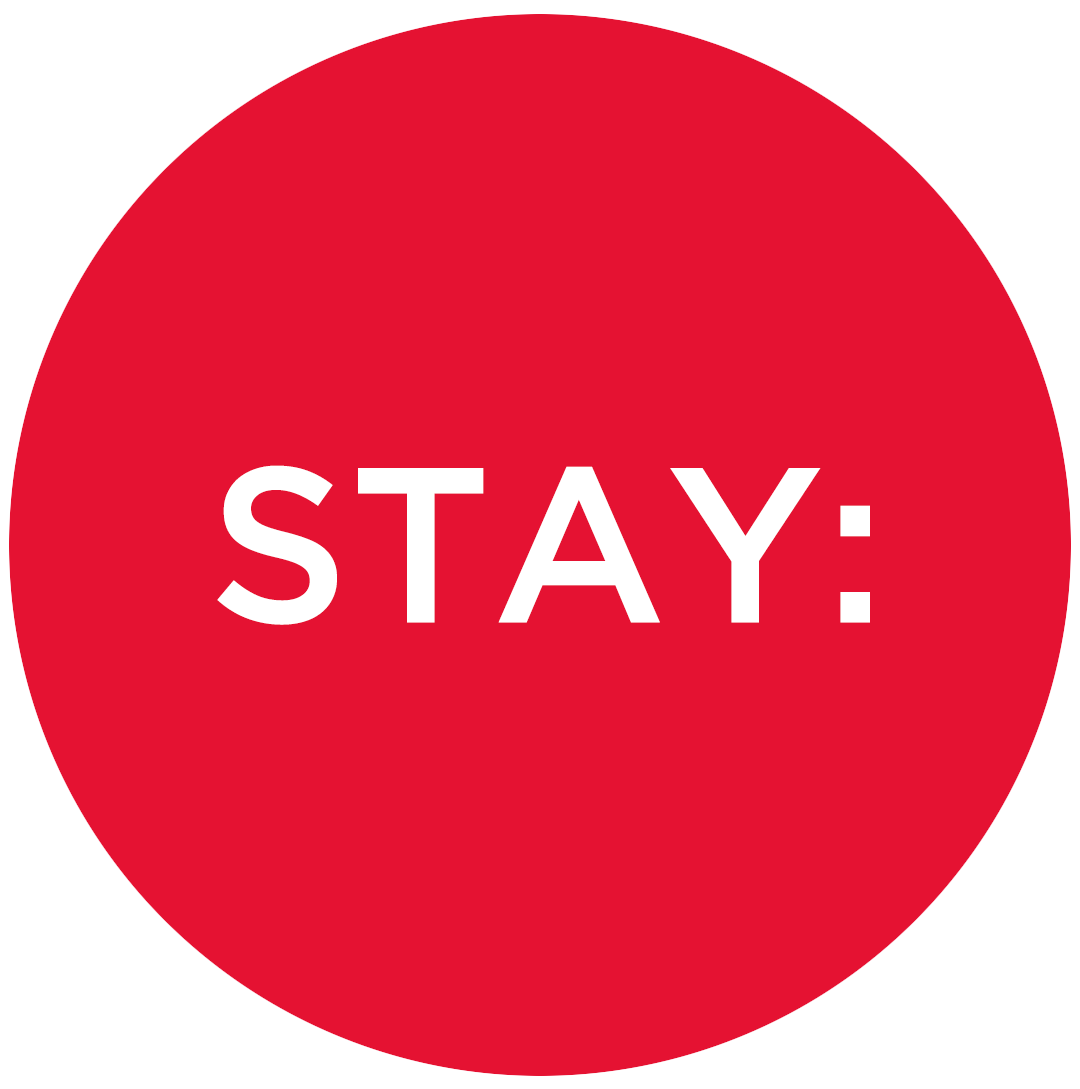
Objectives of the service
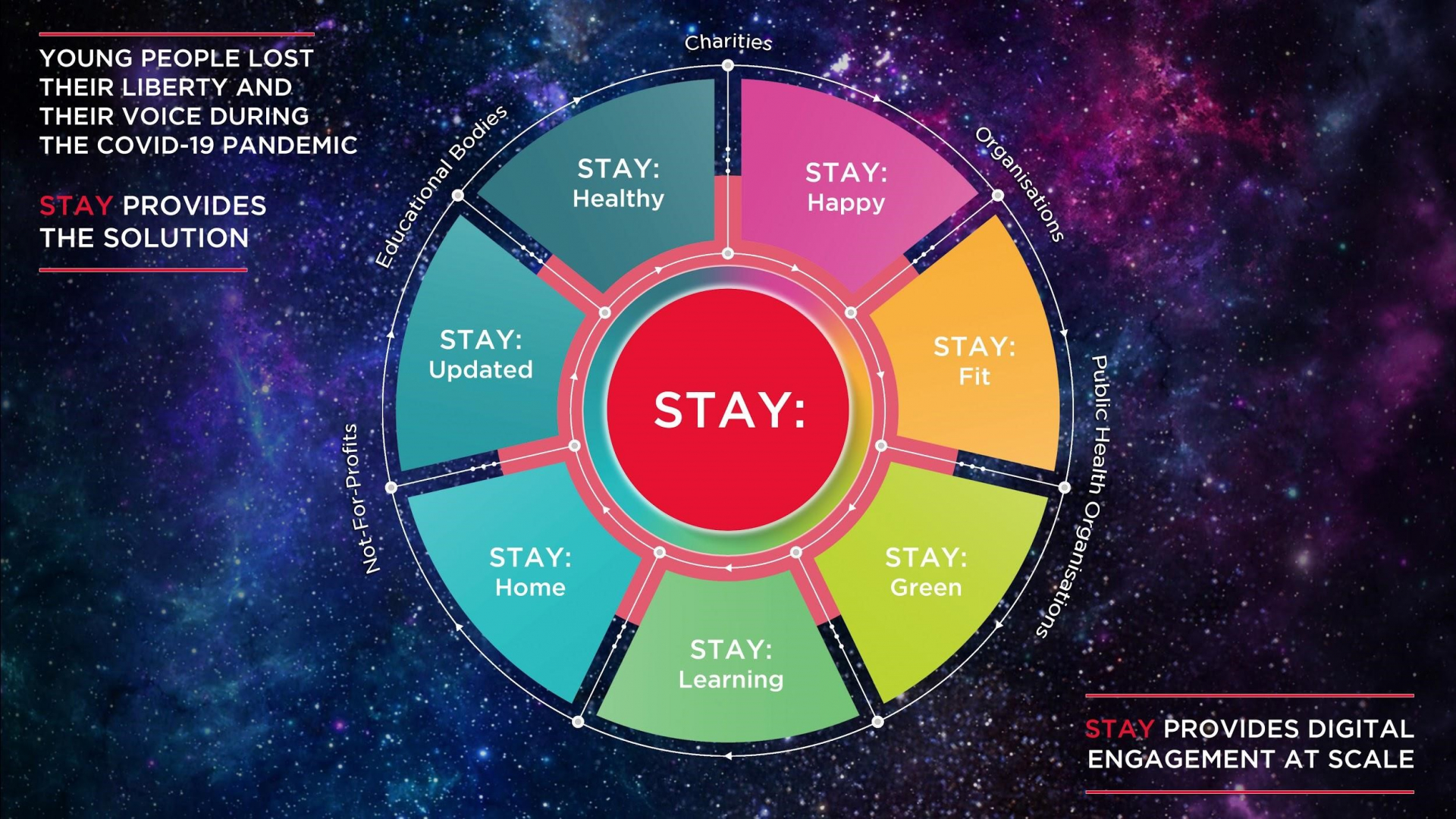
Background image credit: Hubble - click here
Young people lost their liberty and their voice during the COVID-19 pandemic. The STAY platform has been created in answer to this.
Many young people have been facing what will be one of the most challenging periods of their life so far. Their movement has been restricted, as have their social interactions. There is a terrifying threat consuming the media, their online conversations and the conversation of their parents or carers. 'Normal' has been redefined and everything is changing at a rapid pace.
STAY provides a framework that allows for their wellbeing and mental health to be supported whilst encouraging and rewarding positive actions during the COVID-19 pandemic and beyond.
STAY’s partners wish to deliver impactful, compelling, and most importantly repeatedly engaging messaging to their audiences, to drive awareness, effect behaviour change and reinforce positive action.
This flexible platform provides a solution that can be rapidly and inexpensively deployed and branded to whatever content, design and contextual data they require.
Users and their needs
The STAY platform is built with end users aged between 8 and 21 years old in mind. They are the existing or targeted audiences of the project’s communications partners.
Communications partners range from localised organisations to national and international charities.
Every partner organisation will be given the framework to empower their audience and enable end users to:
STAY: Healthy
STAY: Fit
STAY: Happy
STAY: Updated
STAY: Learning
STAY: Green
STAY: Home
A medical and ethical board has been assembled to ensure that STAY is a positive reinforcement within its target audiences. They have tackled issues of compelling gameplay and the ethical background of the project to optimise for positive mental health benefits and engagement.
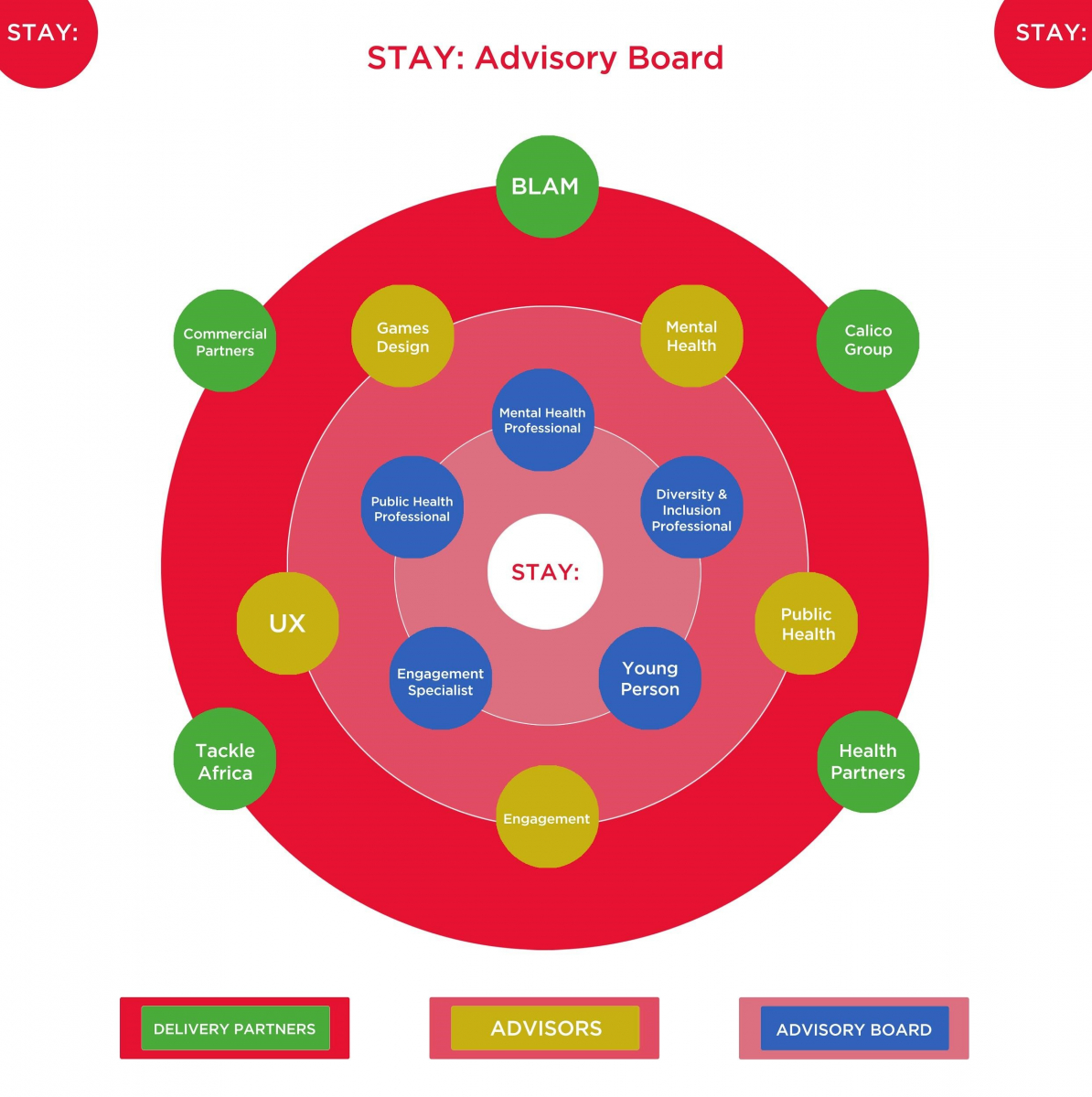
Service/ system concept
STAY has two user bases, the end user (young people) and the partner organisations.
Partner organisations are given a framework that allows them to create and manage branded experiences for their audience. A Content Management System (CMS) allows challenges to be created for end users by the partner organisations. Partner organisations will apply pieces of digital merchandise (dynamic badges) to the successful completion of these challenges.
Young people access the experience by visiting a URL/web-link, this takes them to a fully branded experience for the relevant partner organisation. The platform introduces the young person and delivers them a series of challenges that are relevant to them, delivered by the partner organisation.
The mobile web experience will pitch challenges at end users in a variety of forms inclusive of Augmented Reality experiences that unfold in a user’s locality, watch-and-answer mechanics and multiple choice questions - succeeding at these challenges will unlock a badge that the user collects.
Badges are designed to be earned and personalised using a range of space data.
Space Added Value
Space data is key to end user experiences that are driven by the STAY platform. The variety of ways in which this data is incorporated are best illustrated through the pilot partnership platforms.
Tackle Africa - Race To Africa
A series of dynamically created badges were made available to young fundraisers as part of the STAY platform powered Race To Africa experience. The TackleAfrica charity created a series of badges designed to encourage participation in the Race To Africa virtual race.
The dynamic badges gave fundraisers the opportunity to celebrate their personal achievements.
Satellite photography from the Landsat satellite was woven into the badge design, boasting beautiful birds-eye-views of the current location of the Race To Africa virtual race. Race conditions were also displayed on the badge through the integration of geo-location and hyper-local weather data sourced from an API integration from the Dark Sky API.
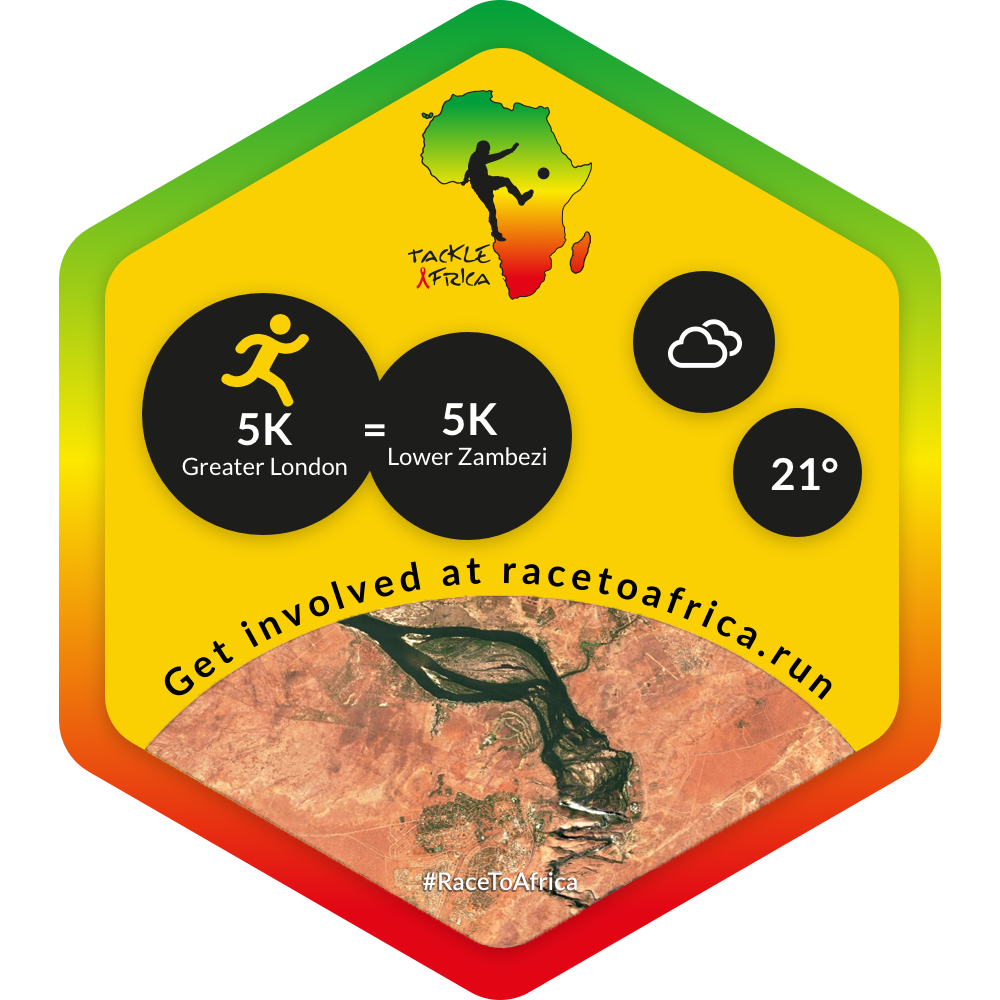
Burnley Together
Young people from in and around the North England town of Burnley were educated through the Burnley Together platform. A series of badges were made available to the organisation's target audience by completing a series of actions in the correct manner.
The following badges incorporated space data into their experience and design:
Be Active: Visit a Park
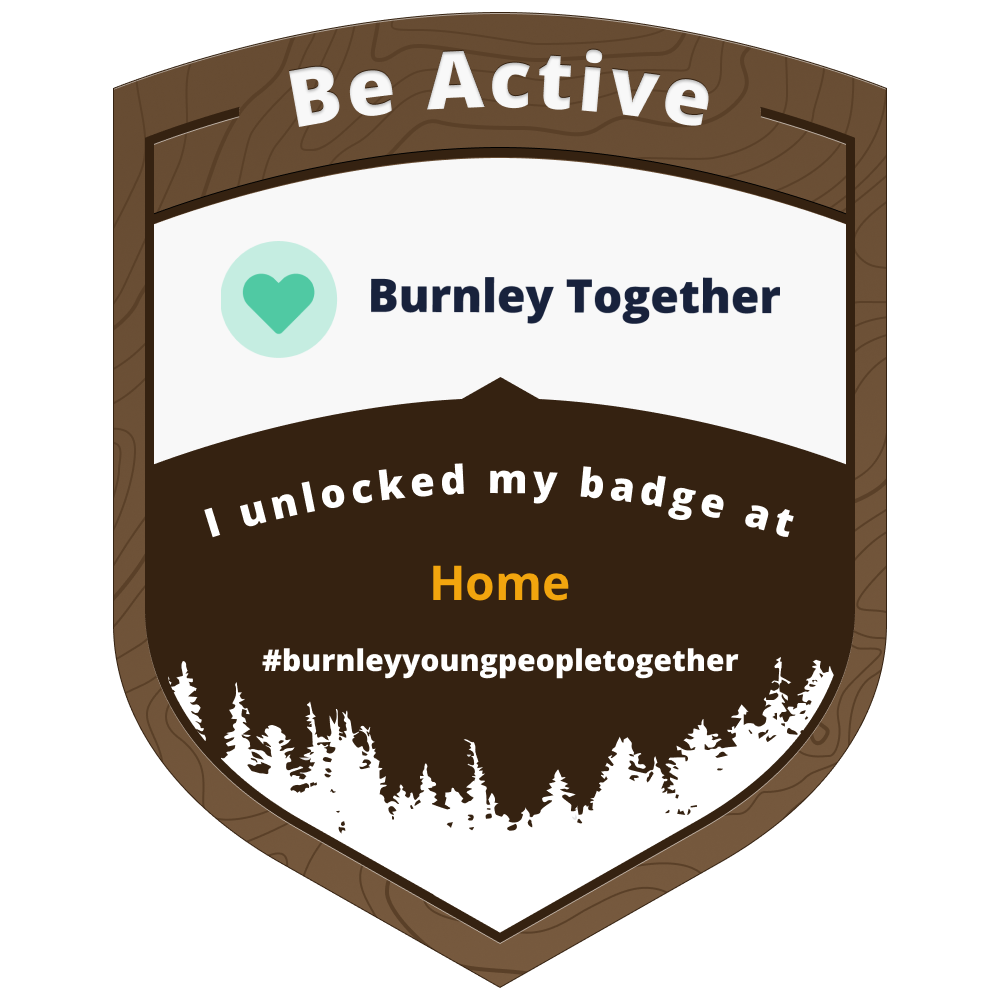
An Augmented Reality hunt that is available to young people that visit one of Burnley’s many parks. Special gold Augmented Reality objects were placed into the parks and made available to young people that took the time and effort to visit and exercise in these green spaces.
Geo-location was used to place these objects and to dynamically incorporate the name of the park onto the badge that a user collects.
Connect: Stay Green
This badge focussed on educating young people on climate change. Data from the Sentinel 5P satellite and the World Air Quality index featured in content that was delivered to people using the platform.
Take Notice: Astronaut
The Astronaut badge gives young people the opportunity to be self reflective and analyse their individual strengths. Once a series of questions had been answered by the young people an Augmented Reality space helmet was placed onto their heads and allowed them to take a photo. Once the photo had been taken they were delivered a keepsake photo filter that gave them a suggested job from the space industry.
BLAM History Bites
The BLAM platform used geo-location to place Augmented Reality experiences onto a map. Users visiting the platform could move to the physical locations that these objects were placed - as they arrived the object was available to unlock and experience.
One of the subjects that audiences were tasked with learning about was Black In Space, with subject matter and an Augmented Reality statue that celebrated African-American astronauts.
Current Status
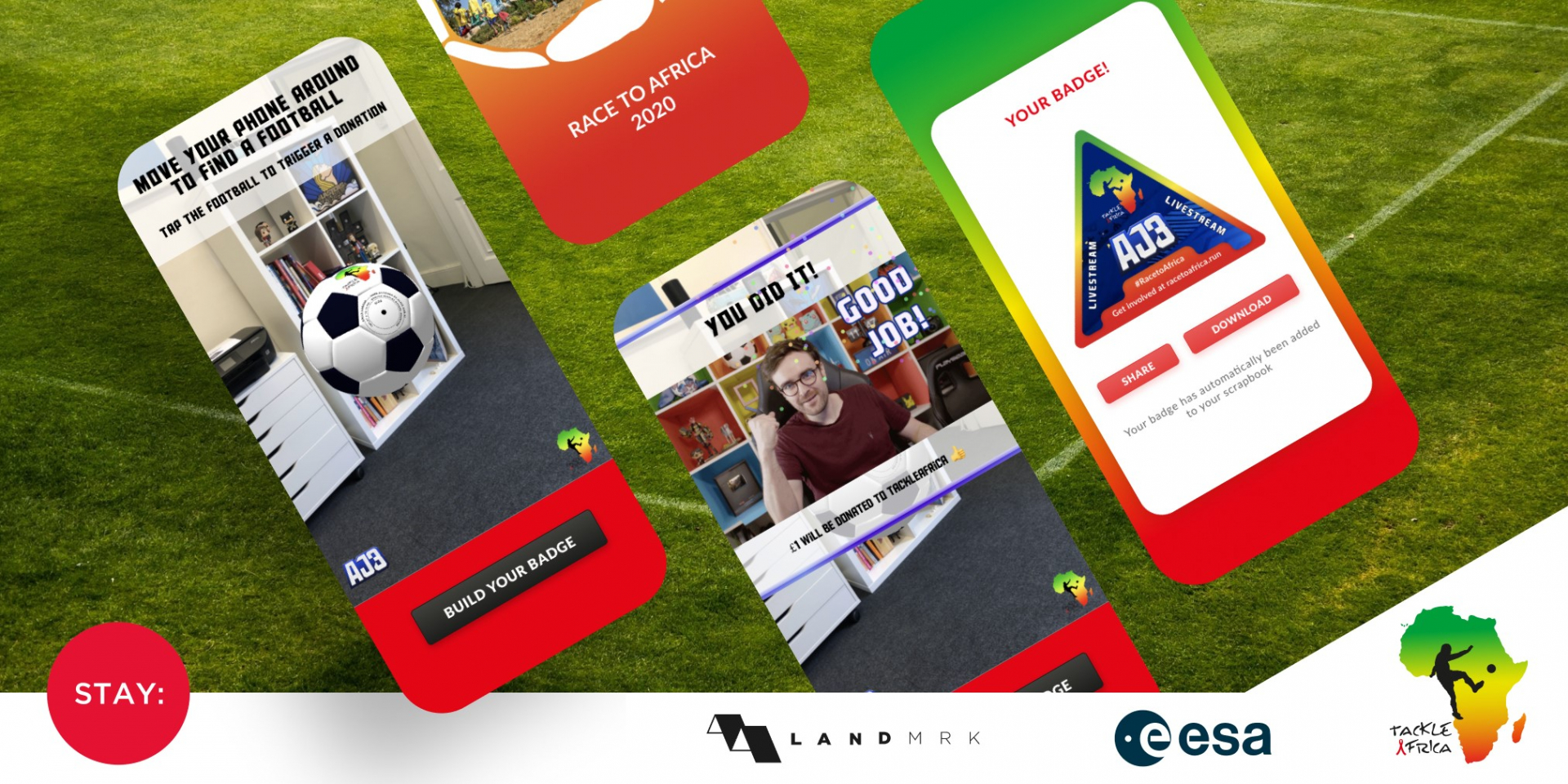
The STAY project ran from June 2020 until end October 2020. It is celebrating three successful pilot partnership launches. The pilot partners include community services organisation - Burnley Together, black history educational group - BLAM and UK based HIV awareness charity - TackleAfrica.
The COVID-19 pandemic forced TackleAfrica to look for alternative fundraising formats. In light of this the charity created Race To Africa; a virtual journey from London to Durban in which every mile of exercise carried out by fundraisers locally, saw a mile completed on the virtual journey.
The STAY powered Race To Africa digital experience charted the race’s multi-continent progress and gave incentives and rewards to young UK based fundraiser
s through opportunities to earn dynamic badges.
The Distance badge gave fundraisers the opportunity to celebrate their personal achievements whilst tracking the progress of the Race To Africa. Satellite photograph
splayed on the badge through the integration of geo-location and hyper-local weather data sourced from an API integration from the Dark Sky API.y from the Landsat satellite was woven into the badge’s design, boasting beautiful birds-eye-views of the current location of the virtual race. Race conditions were also di
The fundraising push by TackleAfrica culminated in a 12 hour marathon livestream by FIFA streamer AJ3. Throughout the day his fanbase were given the opportunity to collect Augmented Reality footballs through the platform. Every football that was collected saw £1 being donated to the TackleAfrica cause.
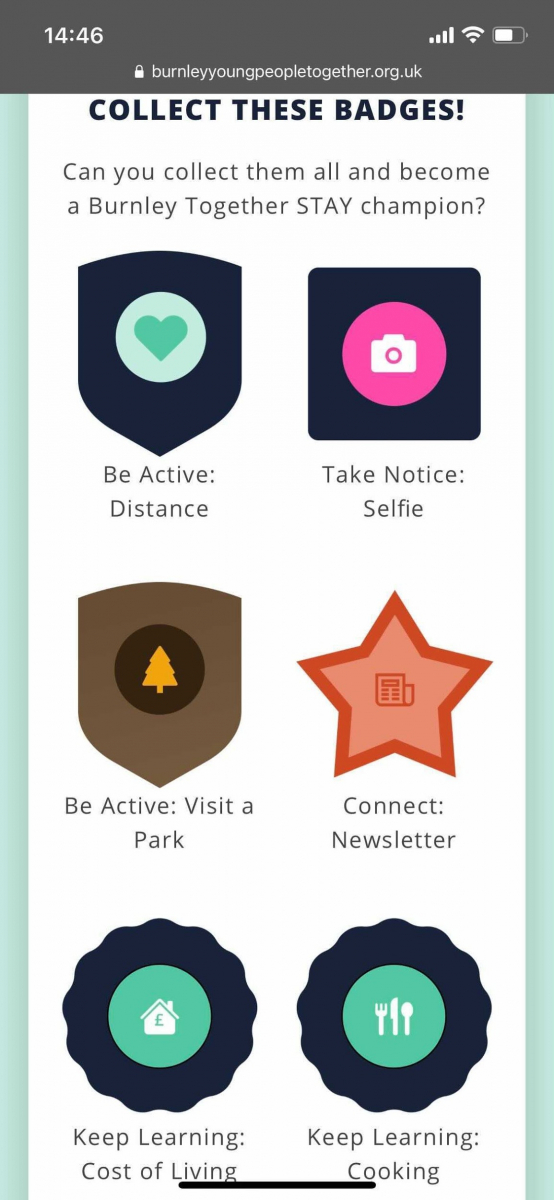
AJ3’s audience collected 5,000 AR footballs in total, generating an additional £5,000 for the Race To Africa fundraising push. The full total from the livestream contributed £13,829 of the grand total of £31,844 raised through the Race To Africa initiative.
The charity have already confirmed that the STAY platform will play an active role in their future fundraising efforts.
The second pilot partner, Burnley Together, harnessed the powers of the STAY platform to engage young people affected by the pandemic in and around the North English town of Burnley.
The platform created a wide range of experiences for young people to take part in, designed to keep them active, encourage mindfulness, keep them informed and create awareness of themselves and the environment.
The Burnley Together platform incorporated geo-location to encourage young people to take advantage of Burnley’s green spaces. Data from the Sentinel-5P satellite was used in the platform to educate the young people of Burnley about climate change and illustrate the effects that the UK’s national lockdown had on nitrogen and carbon emissions.
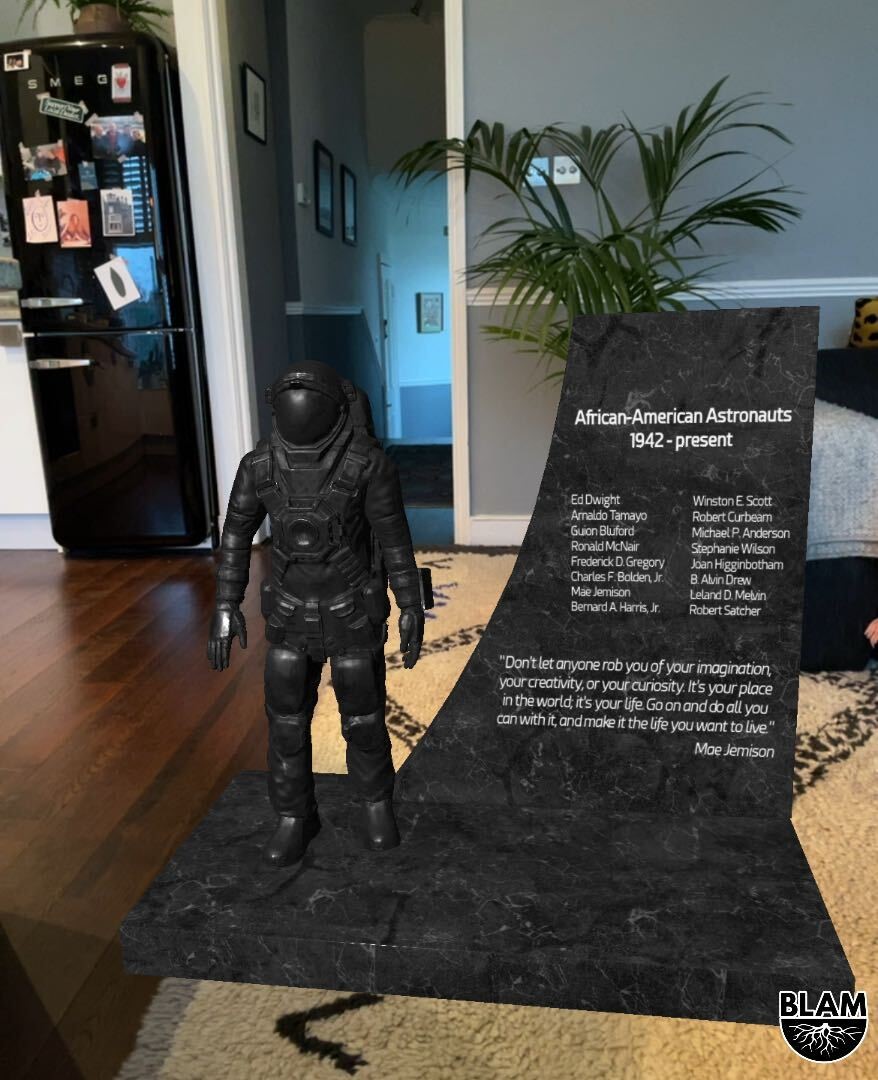
Since the platform was launched the organisation has used it to help communicate their key messages to a wide range of young people amongst the area.
The third partnership witnessed the STAY platform power an engaging experience for black history educational group; BLAM (Black Learning and Mental Health).
The organisation’s teaching efforts in schools had been hampered by the pandemic and the platform gave BLAM a new, exciting way to communicate with their target audiences.
Young people engaging with the platform read, watched and listened to the content on offer and answered a series of questions.
Young people that managed to get the correct answers to the questions were delighted with a stunning Augmented Reality statue related to the subject matter. One of the statues available celebrated the importance of black astronauts in the history of the space travel industry.
An interactive map in the experience charts each statue that a person created. Geo-location was used to place markers on to the BLAM branded map - as a young person arrived at these locations the statue that was placed there was unlocked and enjoyed.
Throughout the duration of the STAY project, that began in June 2020 and ended in October 2020, the Landmrk team worked closely with an advisory board that provided expertise regarding public health, youth engagement, mental health, diversity and inclusion. The advice was instrumental in shaping the course of the platform features and the pilot partnerships.
The advisory board’s priceless advice will live on beyond the project allowing organisations to ensure they are taking the right steps when creating digital experiences for young people. The report is entitled "Ethical, Health and Wellbeing Emerging Practice Guidance; Engaging Young People through Digital Platforms”.



